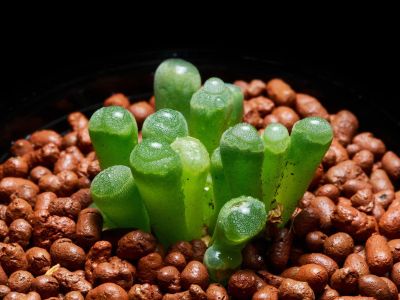Baby Toes Succulent Plants
Baby toes plants (Fenestraria rhopalophylla) are native to subtropical desert zones. They require bright sun and moderate water in well-drained soil with plenty of gritty matter. Mother Nature engineered them to be very tolerant of low nutrient soils with extreme weather conditions. The perennial succulents form columns of leaves that are thick and rise up like small toes with flattened tops. The tops possess a translucent membrane over the top of the leaf. The vertical leaves may be mistaken for stems but are really modified foliage. Baby toes succulents may be mottled, grayish green to fully gray or even brown.
Baby Toes Plant Propagation
Like many succulents, Fenestraria baby toes produces offsets as the clusters of leaves mature and spread. These are easy to divide from the main clump and will readily produce another plant. Baby toes bloom in late summer to autumn with daisy-like flowers in a variety of hues. The seeds from the plant germinate sporadically and grow extremely slowly. Faster baby toes plants are achieved by dividing off the side growth.
How to Grow a Baby Toes
Starting baby toes from seed can be rewarding but you need a few key elements for a successful venture. First, the container should be shallow and well-draining. Make up a growing medium with equal parts coir, potting soil, sand, fine gravel and perlite. Moisten the mixture in the pot lightly and strew the seeds evenly on the surface of the soil. Sprinkle a light dusting of sand over the seeds. They will push the sand out of their way as the seedlings emerge. Cover the pot with clear plastic and place in a low light area until germination. Mist the plants after they emerge and remove the cover for half an hour daily to prevent fungal growth.
Care of Baby Toes
Move pots to a fully sunlit area where temperatures range at least 65 F. (19 C.). As with most succulent plants, the biggest problem is over or under watering. While baby toes are tolerant of drought conditions, they need moisture to store in their leaves to sustain them during the growing season. Baby toes have few pest or disease problems, but do watch out for rot when plants are over watered or in pots that don’t drain well. Fertilize in early spring with a half dilution of cactus and succulent food. Suspend watering in the dormant season from November to February. Other than that, care of baby toes, is so easy the infant whose toes they resemble could almost grow these great little succulents.
